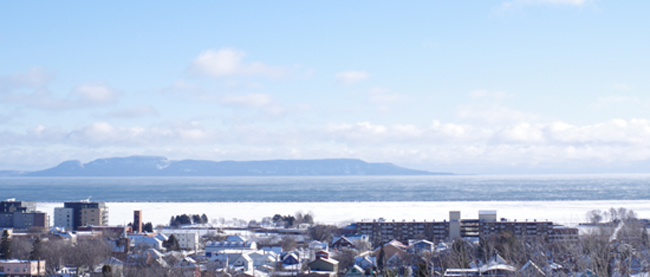Open water conditions concern Grandmother Josephine

By Rick Garrick
Waterwalker Josephine Mandamin is concerned about the unusual open water conditions along Lake Superior’s northern coast this winter.
“I’ve noticed it this year especially that it hasn’t frozen over,” says the Wikwemikong citizen who lives in Thunder Bay. “When I drive around by Pays Plat and all those areas the water is open to Sault Ste. Marie — the water is wide open.”
Mandamin says Lake Superior is affected by the warmer conditions in the Arctic, “where the ice is melting.”
“In the year 2000 we were told that there was going to be changes in the environment,” Mandamin says, noting the changes were predicted by Grand Chief Eddie Benton-Banai of the Three Fires Midewiwin Lodge. “And we are seeing the warmth of the change. In our area here in Thunder Bay, we are seeing a big difference with the climate. We are not getting as much cold as we used to have. And when the weatherman says we are going to get a storm, we don’t get it. It goes the other way; the wind seems to blow it away.”
Mandamin has an intimate knowledge of Lake Superior, as she walked around all five Great Lakes and the length of the St. Lawrence River with a pail of water to raise awareness of changing water quality during her Mother Earth Water Walks.
The federal government stated that warmer than average temperatures were recorded across the world for the 30th consecutive year in 2006, on a Statistics Canada climate change webpage: www.statcan.gc.ca/pub/16-201-x/2007000/10542-eng.htm.
The webpage also states that rivers and lakes are freezing later and thawing earlier than before, which is resulting in difficulties in the building and maintenance of winter roads to many northern communities.
“We have to start doing our work as Anishinabe people to take care of Mother Earth,” Mandamin says. “The animals need us; every element needs us now. We have to start doing our work.”
Mandamin says women were told in 2000 to start doing more of their work around taking care of the environment and the water.
“There is always hope, and we have to start thinking about how we do things,” Mandamin says. “We have to start thinking about how we lived in previous years. We had to plant our own food; we didn’t buy them in the grocery store.”
Mandamin’s family used to live on the land when she was young.
“We grew our own food,” Mandamin says. “We had fresh water all the time, we had a well behind the barn. It was a good life.”
Mandamin says the Anishinabe previously travelled great distances to find a new way of life in the Great Lakes region.
“We travelled from the east to find food that grows on the water,” Mandamin says. “That was a good thousand years ago.”
Mandamin’s viewpoint is that changes seem to happen every 1,000 years.
“And it is up to us to change it for the good,” Mandamin says. “There is always hope that we can change things around.”
The Statistics Canada webpage states that warmer winters, more frequent summer heat waves, changes in precipitation, changes in wind patterns, and an increased frequency of severe storms are among the expected changes in Canada. Warming is expected to be most pronounced in arctic regions, causing permafrost to melt and glaciers to retreat more quickly.


